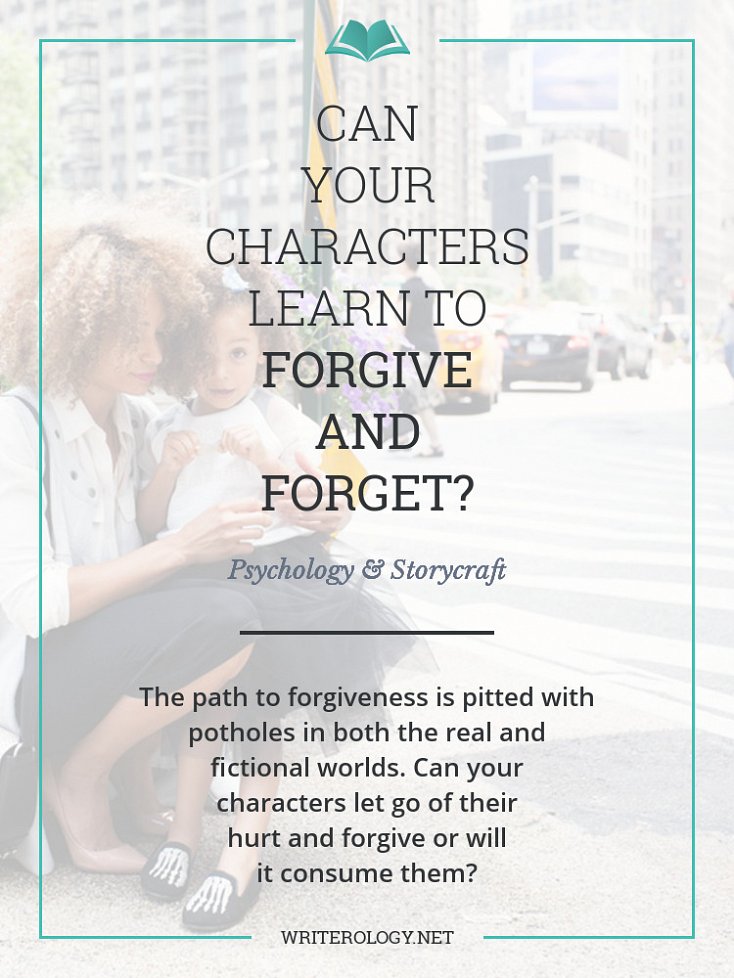Can Your Characters Learn to Forgive and Forget?
The path to forgiveness is pitted with potholes in both the real and fictional worlds. Can your characters let go of their hurt and forgive, or will they let it consume them?
Hurt. Betrayal. Anger. We’ve all felt them at some point, and because we’re sadistic overlords who like to inflict maximal suffering, so have our characters.
Dealing with hurt can be an uphill struggle, with positive and negative ways to deal with emotional pain. If revenge is the dark, twisted route, forgiveness is the light (though, in several ways, more difficult) path. Can your characters tread it all the way to its end?

Forgiveness is often misunderstood. It doesn’t mean forgetting that someone’s hurt you, condoning it or excusing what they’ve done. Instead, it involves letting go of bitter, resentful and negative thoughts towards the wrongdoer and replacing those feelings with compassion and love. But that can be easier said than done.
Personality traits, attachment styles and other individual differences can make forgiveness difficult for some, but if your character do try to forgive another, the steps in the model below can help you to craft an arc that reflects the real-life psychological process of forgiveness, an arc that resonates with readers because they’ve gone through it themselves. And we’re all about forging that connection, right?
Enright’s Model of Forgiveness
Uncovering Phase
In this stage, you identify all the negative emotions, all the hurt and anger and injustice, you feel because of the offender’s actions. You also realise that feeling these things causes you more harm than the other person.
Decision Phase
Once those negative feelings are identified, you then have to decide whether or not to make an attempt at forgiveness. You know that you’re being hurt because of all that negativity and realise that you need to do something about it to allow yourself to move on.
Work Phase
This is where the hard work comes in. To forgive someone, you first have to understand them, their situation, their feelings, their reasons for doing what they did, and empathise with them.
Did economic, social or peer pressure have anything to do with it? What about their childhood? Did they understand what they were doing? Mean to do it? This stage isn’t so much about making excuses for the offender or reconciling with them, but understanding them and feeling compassion.
Outcome/Deepening Phase
In the final stage of the forgiveness process, you gain something from the hurt—a sense of meaning, awareness or understanding—that can give you a new purpose in life. You realise the eventual positive effects of the hurt and of forgiveness.
The layout of the phases isn’t set in stone; you can go back and forth between stages as you struggle to forgive.
Personality traits can also affect whether you forgive and how easy you find it. Those with lower levels of neuroticism and/or higher levels of extraversion and conscientiousness usually find forgiveness easier than most.
Applying Theory to Fiction
Character Arc
If your character initially finds it hard to forgive, her inner journey throughout the novel might be to learn to move on from negative feelings, as laid out in Enright’s model of forgiveness.
Your character might suffer hurt or betrayal at some point in the story; knowing the process of forgiveness can give you a guideline of the stages the character might go through in her attempts to forgive.
Conflict
Now that you know the stages your character could go through to successfully forgive, you can turn that on its head and sabotage her fledgling efforts at moving on. Your character might reach the work phase, attempt to empathise, and find that it’s beyond her, or maybe she doesn’t even get that far and can’t understand that her negative emotions are causing her lasting damage.
Want to learn more about the intricacies of forgiveness? Check out 3 Ways Your Characters Could Forgive… Or Not.